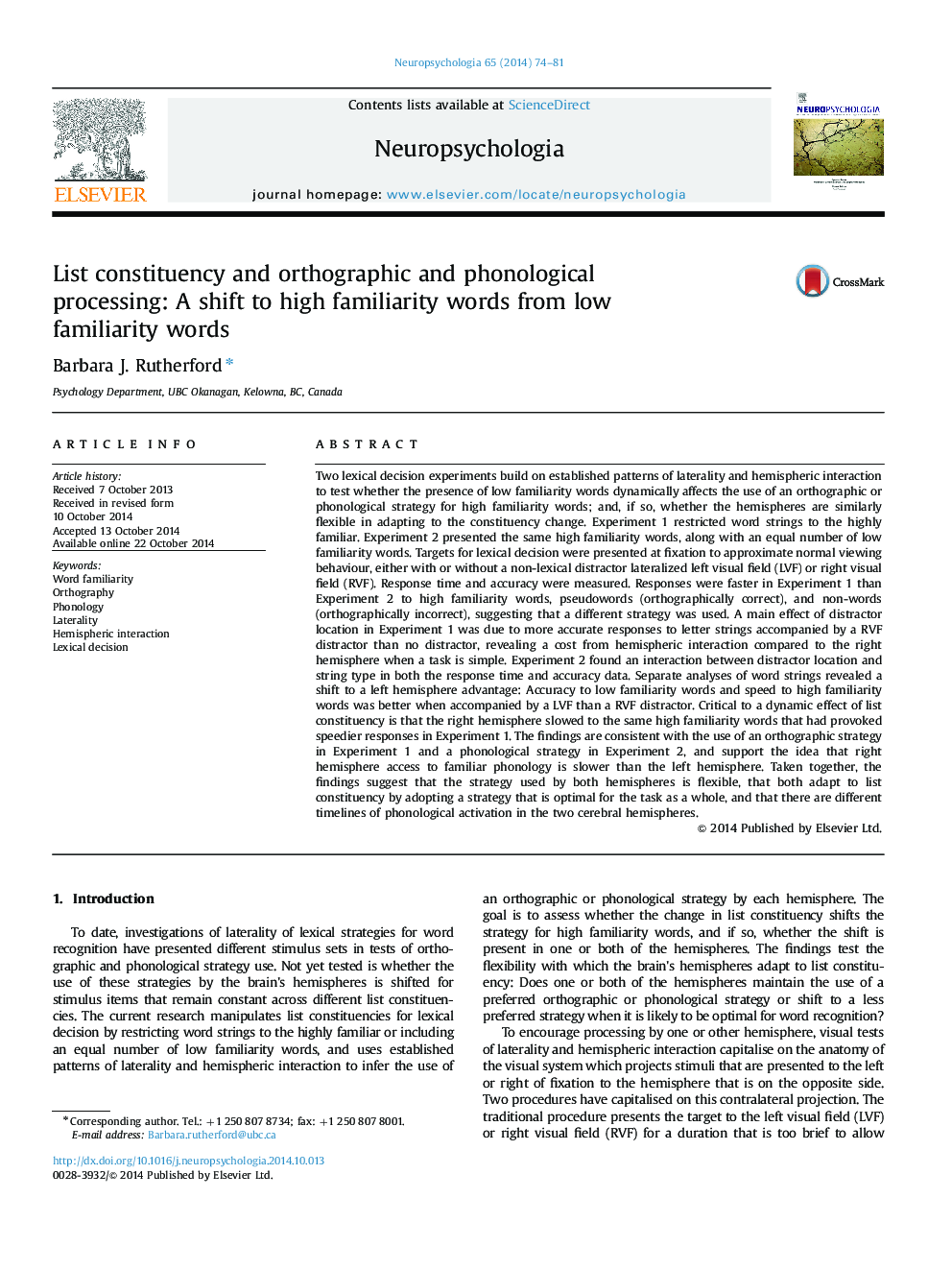| کد مقاله | کد نشریه | سال انتشار | مقاله انگلیسی | نسخه تمام متن |
|---|---|---|---|---|
| 7320661 | 1475588 | 2014 | 8 صفحه PDF | دانلود رایگان |
عنوان انگلیسی مقاله ISI
List constituency and orthographic and phonological processing: A shift to high familiarity words from low familiarity words
ترجمه فارسی عنوان
فهرست حوزه های انتخابی و پردازش های ارتوپدی و واجشناسی: تغییر به آشنایی با کلمات با کلمات کم آشنایی
دانلود مقاله + سفارش ترجمه
دانلود مقاله ISI انگلیسی
رایگان برای ایرانیان
کلمات کلیدی
آشنایی با کلمه ارتوگا فرهنگ لغت، کمال گرایی، تعامل نیم کره ای، تصمیم منطقی،
موضوعات مرتبط
علوم زیستی و بیوفناوری
علم عصب شناسی
علوم اعصاب رفتاری
چکیده انگلیسی
Two lexical decision experiments build on established patterns of laterality and hemispheric interaction to test whether the presence of low familiarity words dynamically affects the use of an orthographic or phonological strategy for high familiarity words; and, if so, whether the hemispheres are similarly flexible in adapting to the constituency change. Experiment 1 restricted word strings to the highly familiar. Experiment 2 presented the same high familiarity words, along with an equal number of low familiarity words. Targets for lexical decision were presented at fixation to approximate normal viewing behaviour, either with or without a non-lexical distractor lateralized left visual field (LVF) or right visual field (RVF). Response time and accuracy were measured. Responses were faster in Experiment 1 than Experiment 2 to high familiarity words, pseudowords (orthographically correct), and non-words (orthographically incorrect), suggesting that a different strategy was used. A main effect of distractor location in Experiment 1 was due to more accurate responses to letter strings accompanied by a RVF distractor than no distractor, revealing a cost from hemispheric interaction compared to the right hemisphere when a task is simple. Experiment 2 found an interaction between distractor location and string type in both the response time and accuracy data. Separate analyses of word strings revealed a shift to a left hemisphere advantage: Accuracy to low familiarity words and speed to high familiarity words was better when accompanied by a LVF than a RVF distractor. Critical to a dynamic effect of list constituency is that the right hemisphere slowed to the same high familiarity words that had provoked speedier responses in Experiment 1. The findings are consistent with the use of an orthographic strategy in Experiment 1 and a phonological strategy in Experiment 2, and support the idea that right hemisphere access to familiar phonology is slower than the left hemisphere. Taken together, the findings suggest that the strategy used by both hemispheres is flexible, that both adapt to list constituency by adopting a strategy that is optimal for the task as a whole, and that there are different timelines of phonological activation in the two cerebral hemispheres.
ناشر
Database: Elsevier - ScienceDirect (ساینس دایرکت)
Journal: Neuropsychologia - Volume 65, December 2014, Pages 74-81
Journal: Neuropsychologia - Volume 65, December 2014, Pages 74-81
نویسندگان
Barbara J. Rutherford,
